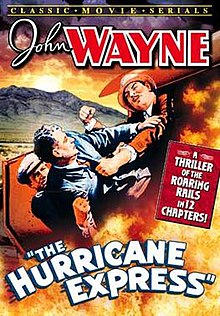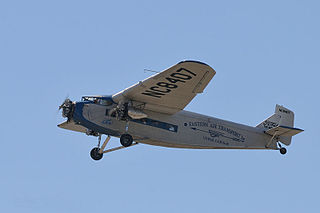
The Ford Trimotor is an American three-engined transport aircraft. Production started in 1925 by the companies of Henry Ford and ended on June 7, 1933, after 199 had been made. It was designed for the civil aviation market, but also saw service with military units.
This is a list of aviation-related events from 1930:
This is a list of aviation-related events from 1931:
This is a list of aviation-related events from 1929:
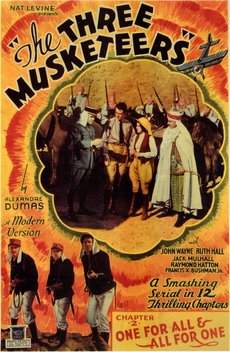
The Three Musketeers is a 1933 American pre-Code film serial directed by Armand Schaeffer and Colbert Clark, and produced by Nat Levine for Mascot Pictures. The film serial was very loosely based on Alexandre Dumas' 1844 novel The Three Musketeers, with the musketeers changed into three soldiers in the French Foreign Legion, and d'Artagnan being reconfigured as Lt. Tom Wayne, a pilot in the United States military.

Fitchburg Municipal Airport is a public airport located 3 miles (5 km) southeast of the central business district of Fitchburg, a city in Worcester County, Massachusetts, United States. This airport is owned by the City of Fitchburg. The airport also serves as a base for the Fitchburg Pilots Association/EAA chapter 1454. This group uses the airport to host events such as Young Eagles and flights in EAA's Ford Trimotor. The airport underwent a renovation in 2020 that extended runway 14/32 by 500 feet to its current length of 5001 feet. The runway extension was to meet requirements for insurance companies to permit certain small jets to land and take off from the airport. The renovation removed runway 2/20. Occasionally the airport serves as a home for rock festivals such as The Warped Tour and Locobazooka.
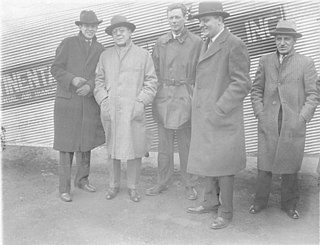
Transcontinental Air Transport (T-A-T) was an airline founded in 1928 by Clement Melville Keys that merged in 1930 with Western Air Express to form what became TWA. Keys enlisted the help of Charles Lindbergh to design a transcontinental network to get government airmail contracts. Lindbergh established numerous airports across the country in this effort.

Flying Disc Man from Mars is a 1950 Republic Pictures 12-chapter black-and-white science fiction adventure film serial, produced by Franklin Adreon, directed by Fred C. Brannon, that stars Walter Reed, Lois Collier, Gregory Gaye, James Craven, Harry Lauter, and Richard Irving. Disc Man is considered a weak example of the serial medium, even compared to other post-World War II serials. In 1958 Republic edited the serial's 167 minutes of footage into a 75-minute feature, released under the new title Missile Monsters.
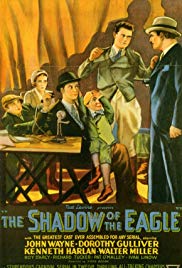
The Shadow of the Eagle is a 1932 American Pre-Code Mascot 12 episode film serial, directed by Ford Beebe and B. Reeves Eason and produced by Nat Levine. The film stars John Wayne in his first serial role. He would go on to star in two other serials for Mascot, The Hurricane Express (1932) and The Three Musketeers (1933). The Shadow of the Eagle is now in the public domain.
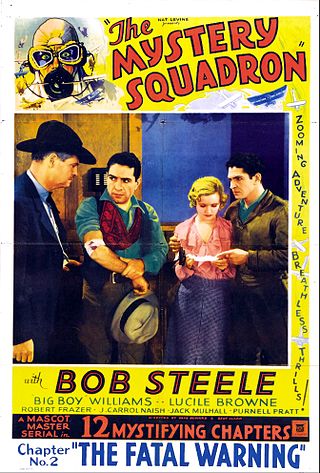
The Mystery Squadron is a 1933 American pre-Code 12-chapter Mascot film serial, directed by Colbert Clark and David Howard. The film was produced by Nat Levine, and stars Western star Bob Steele, Guinn "Big Boy" Williams, Lucile Browne, Purnell Pratt and Jack Mulhall. The Mystery Squadron made an impressive use of a great deal of aerial footage to enliven the action.
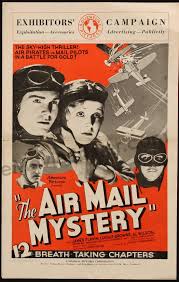
The Airmail Mystery is a 1932 Universal pre-Code movie serial directed by Ray Taylor, written by Ella O'Neill, starring James Flavin and Wheeler Oakman, and featuring Al Wilson doing the aerial stunts. The Airmail Mystery was Universal's first aviation serial that set the pattern for the aviation serials and feature films to follow. The film also marks the film debut of James Flavin. The Airmail Mystery is considered a lost film.

The Phantom of the Air is a 12-episode 1933 Pre-Code Universal film serial directed by Ray Taylor. The film stars Tom Tyler, who was cast most often in Westerns. Other actors include Gloria Shea, LeRoy Mason, Craig Reynolds and William Desmond.
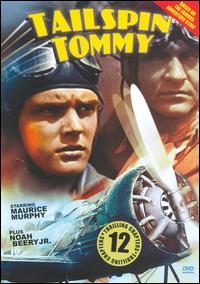
Tailspin Tommy is a 12-episode 1934 Universal film serial based on the Tailspin Tommy comic strip by Hal Forrest. Directed by Lew Landers and produced by Milton Gatzert, the serial was the 97th serial of the 137 released by that studio. The plot of Tailspin Tommy concerns a conflict over a government airmail contract.

Tailspin Tommy in the Great Air Mystery is a 12-episode 1935 Universal movie serial based on the Tailspin Tommy comic strip by Hal Forrest and starring Clark Williams, Jean Rogers and Noah Beery, Jr. The picture was the 96th of the 137 serials released by the studio.

The Mysterious Pilot is a 15-episode 1937 Columbia movie serial based on the book by William Byron Mowery and starring the record-breaking aviator Frank Hawks. This was the second serial produced by Columbia. In the serial, Hawks plays a flying "mountie".

Sky Raiders is a 12-episode 1941 Universal film serial. The serial was directed by Ford Beebe and Ray Taylor. Sky Raiders stars Donald Woods, Billy Halop, Robert Armstrong and Eduardo Ciannelli. Sky Raiders has little in common with Universal’s other early-1940s espionage outings like Sea Raiders or Junior G-Men, although the serial is often lumped in together as if it is part of a series.
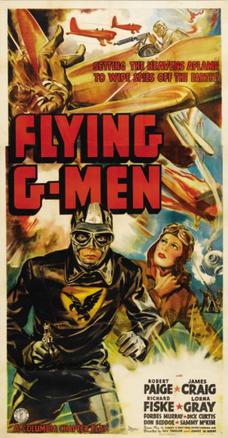
Flying G-Men is a 15-episode 1939 adventure film Film serial, directed by James W. Horne and Ray Taylor. The serial was the sixth of the 57 serials released by Columbia. Four "Flying G-Men" battle with enemy saboteurs intent on destroying American military defences.

Riding with Buffalo Bill is a 1954 American Western Serial film directed by Spencer Gordon Bennet and starring Marshall Reed.

Stout Metal Airplane Division of the Ford Motor Company was an American aircraft manufacturer founded by William Bushnell Stout as the Stout Metal Airplane Co. in 1922. The company was purchased by Ford Motor Company in 1924 and later produced the Ford Trimotor. At the height of the Great Depression, Ford closed the aircraft design and production division in 1936, temporarily re-entering the aviation market with the production of the B-24, at the Willow Run aircraft factory during World War II.
Ford Air Transport Service is a defunct airline based in United States of America. The airline was also registered as Ford Air Freight Lines.
